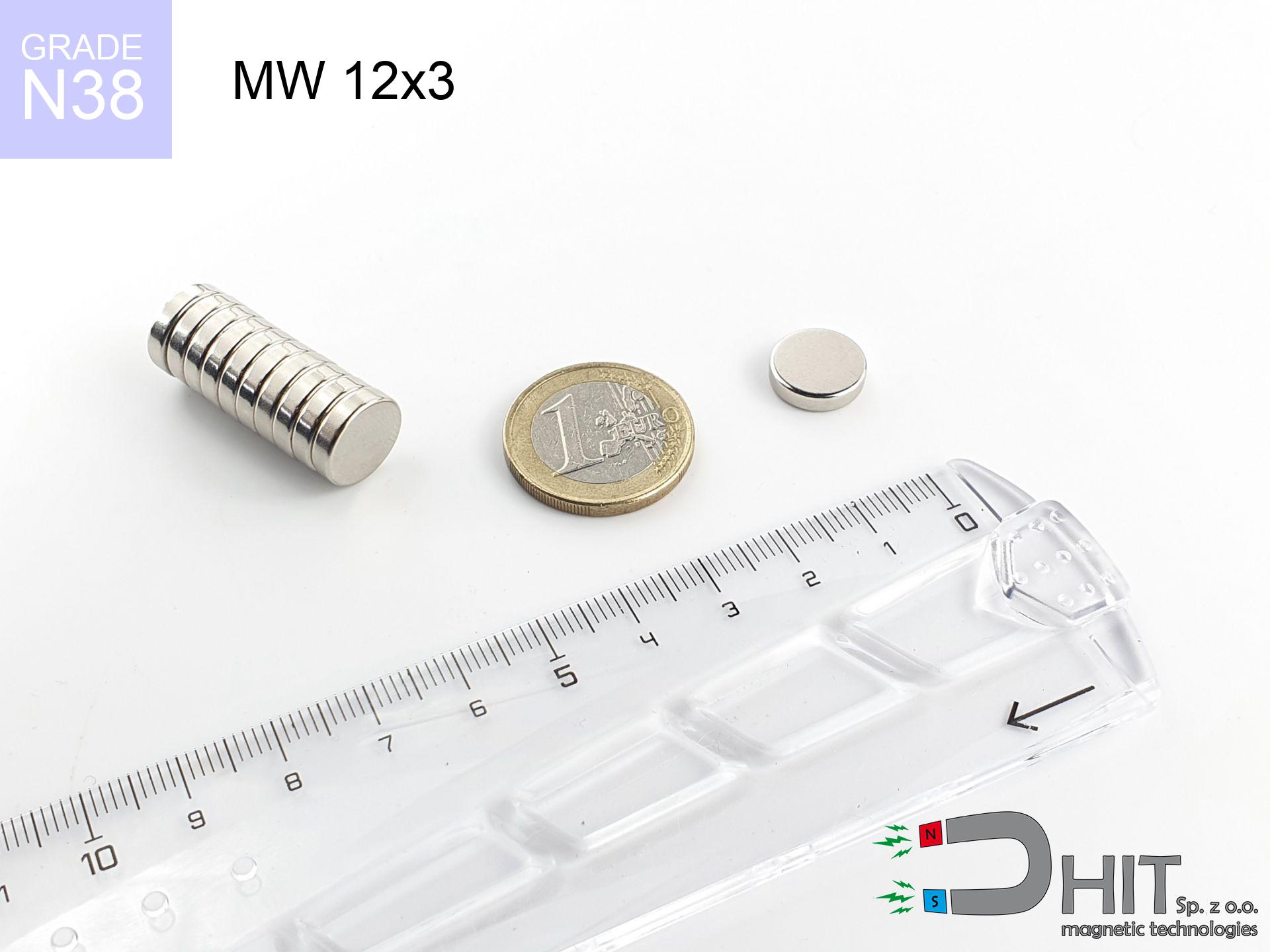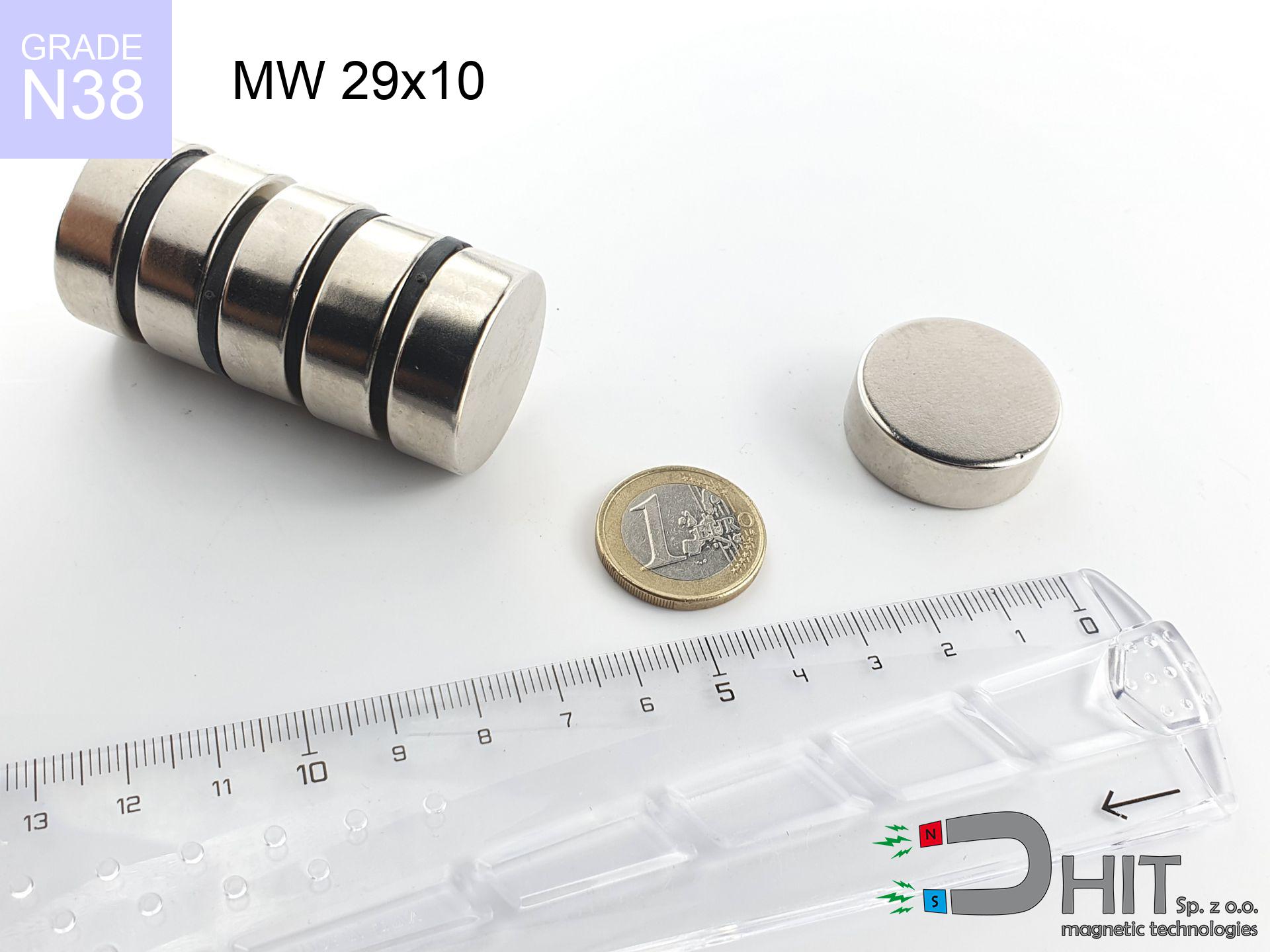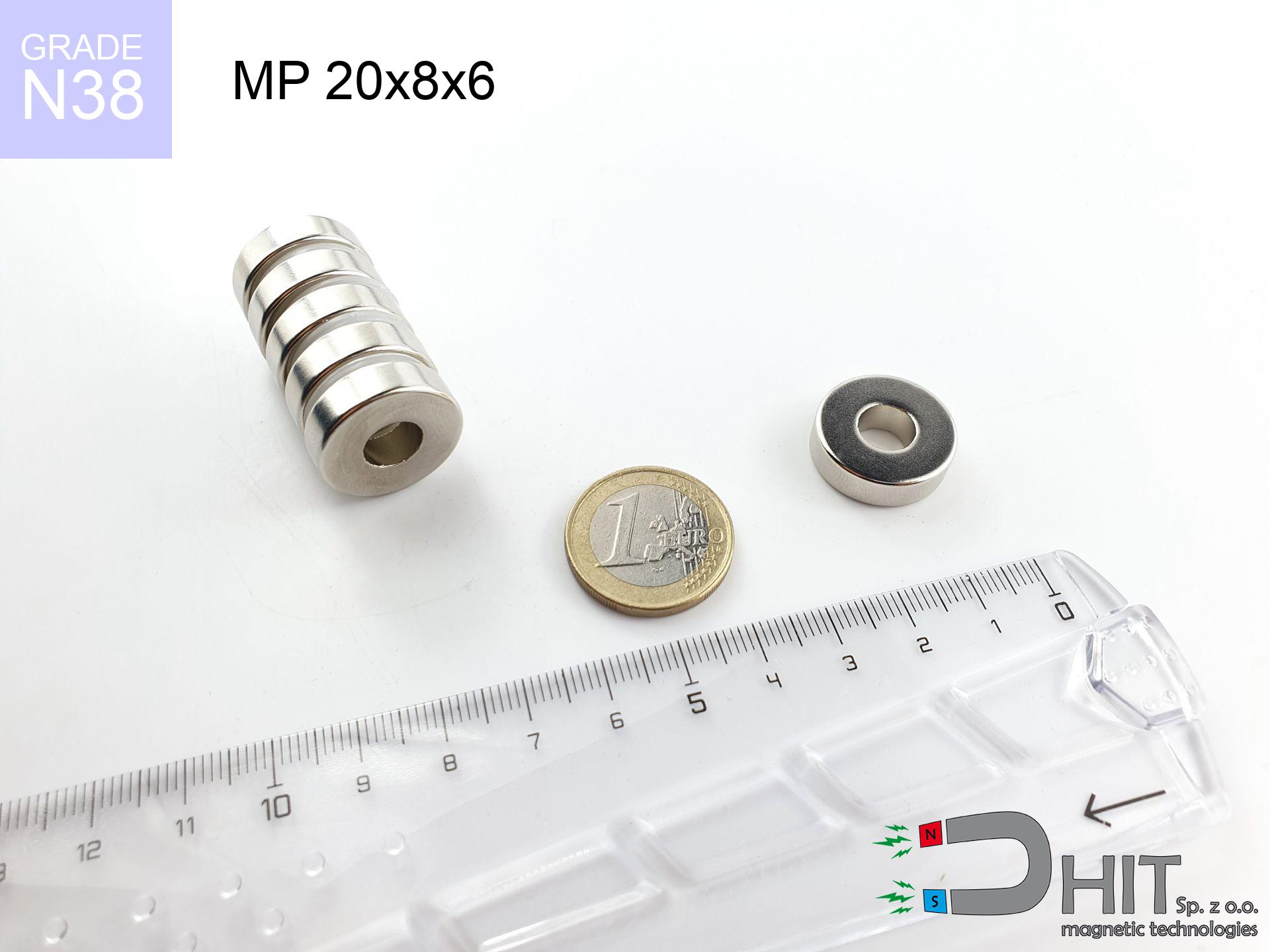UMT 12x20 green / N38 - magnetic pin
board holder
catalog number 230281
GTIN: 5906301814337
diameter Ø
12
mm [±0,1 mm]
height
20
mm [±0,1 mm]
max. temperature
≤ 80
°C
catalog number 230281
GTIN: 5906301814337
diameter Ø
12 mm [±0,1 mm]
height
20 mm [±0,1 mm]
max. temperature
≤ 80 °C
1.89 ZŁ gross price (including VAT) / pcs +
1.54 ZŁ net price + 23% VAT / pcs
bulk discounts:
need more quantity?Want a better price?
Give us a call tel: +48 888 99 98 98 or write through contact form on our website. You can check the power as well as the shape of magnet in our magnetic mass calculator force calculator
Orders placed by 2:00 PM will be shipped on the same business day.
Specification: board holder 12x20 green / N38
Magnetic properties of the material N38
Physical properties of sintered neodymium magnets Nd2Fe14B
List recommended items
Advantages as well as disadvantages of neodymium magnets NdFeB.
Apart from immense power, neodymium magnets have the following advantages:
- They do not lose their strength (of the magnet). After about 10 years, their power decreases by only ~1% (theoretically),
- They are exceptionally resistant to demagnetization caused by an external magnetic field,
- By applying a shiny coating of nickel, gold, or silver, the element gains an aesthetic appearance,
- They have very high magnetic induction on the surface of the magnet,
- By using an appropriate combination of materials, they can achieve high thermal resistance, allowing them to operate at temperatures up to 230°C and above...
- Due to the option of accurate forming and adaptation to individual needs – neodymium magnets can be produced in a wide range of shapes and sizes, which amplifies their universality in usage.
- Significant importance in modern technologies – are utilized in HDD drives, electric motors, medical apparatus or very highly developed apparatuses.
Disadvantages of neodymium magnets:
- They can break as they are extremely fragile when subjected to a powerful impact. If the magnets are exposed to impacts, we recommend using magnets in a metal holder. The steel housing in the form of a holder protects the magnet from impacts and also increases its overall strength,
- Magnets lose their power due to exposure to high temperatures. In most cases, when the temperature exceeds 80°C, these magnets experience permanent reduction in strength (although it is worth noting that this is dependent on the shape and size of the magnet). To avoid this problem, we offer special magnets marked with the [AH] symbol, which exhibit high temperature resistance. They can operate even at temperatures as high as 230°C or more,
- Magnets exposed to a humid environment can corrode. Therefore, when using them outdoors, we recommend using waterproof magnets made of rubber, plastic, or other moisture-resistant materials,
- The use of a cover - a magnetic holder is recommended due to the limited production capabilities of creating threads or complex shapes in the magnet
- Health risk associated with microscopic parts of magnets are risky, if swallowed, which is particularly important in the context of child safety. Furthermore, miniscule components of these magnets are able to complicate diagnosis when they are in the body.
Caution with Neodymium Magnets
Neodymium magnets can become demagnetized at high temperatures.
Although magnets have demonstrated their effectiveness up to 80°C or 175°F, the temperature can vary depending on the type, shape, and intended use of the specific magnet.
Do not bring neodymium magnets close to GPS and smartphones.
Intense magnetic fields generated by neodymium magnets interfere with compasses and magnetometers used in navigation, as well as internal compasses of smartphones and GPS devices.
Dust and powder from neodymium magnets are flammable.
Do not attempt to drill into neodymium magnets. Mechanical processing is also not recommended. Once crushed into fine powder or dust, this material becomes highly flammable.
Magnets should not be treated as toys. Therefore, it is not recommended for children to have access to them.
Neodymium magnets are not toys. You cannot allow them to become toys for children. In such a situation, surgery is necessary to remove them. In the worst case scenario, it can result in death.
Neodymium Magnets can attract to each other, pinch the skin, and cause significant swellings.
In the case of placing a finger in the path of a neodymium magnet, in such a case, a cut or a fracture may occur.
Keep neodymium magnets away from the wallet, computer, and TV.
Neodymium magnets generate intense magnetic fields that can destroy magnetic media such as floppy disks, video tapes, HDDs, credit cards, magnetic ID cards, cassette tapes, etc. devices. They can also damage devices like video players, televisions, CRT computer monitors. Remember not to place neodymium magnets close to these electronic devices.
Neodymium magnets should not be near people with pacemakers.
Neodymium magnets generate strong magnetic fields. As a result, they interfere with the operation of a pacemaker. This happens because such devices have a function to deactivate them in a magnetic field.
Neodymium magnets are delicate and can easily crack and shatter.
Magnets made of neodymium are extremely fragile, and by joining them in an uncontrolled manner, they will crumble. Neodymium magnets are made of metal and coated with a shiny nickel, but they are not as durable as steel. At the moment of collision between the magnets, sharp metal fragments can be dispersed in different directions.
Neodymium magnets are the most powerful magnets ever created, and their power can surprise you.
Please review the information on how to handle neodymium magnets and avoid significant harm to your body, as well as prevent unintentional damage to the magnets.
The magnet coating is made of nickel, so be cautious if you have an allergy.
Studies show a small percentage of people have allergies to certain metals, including nickel. An allergic reaction often manifests as skin redness and rash. If you have a nickel allergy, you can try wearing gloves or simply avoid direct contact with nickel-plated neodymium magnets.
Please see the article - What danger lies in neodymium magnets? You will learn how to handle them properly.




![rubber magnetic holder external thread 66x8.5 [M8] GZ / N38 rubber magnetic holder external thread 66x8.5 [M8] GZ / N38](https://cdn3.dhit.pl/graphics/products/umggz-66x8.5-m6-gz-gas.jpg)


